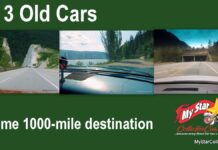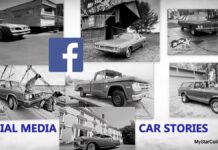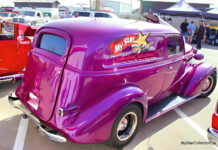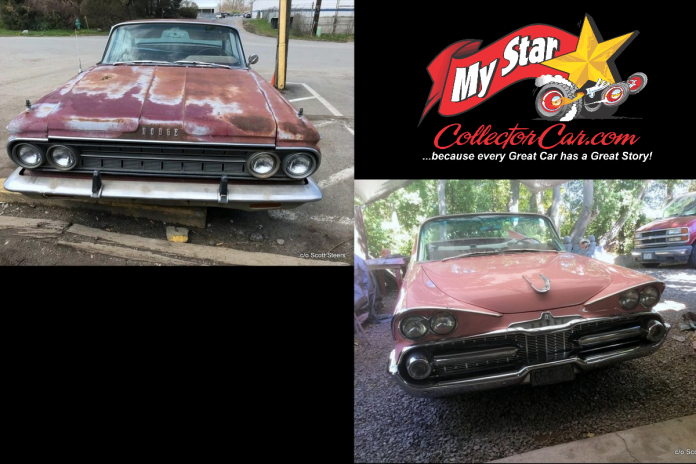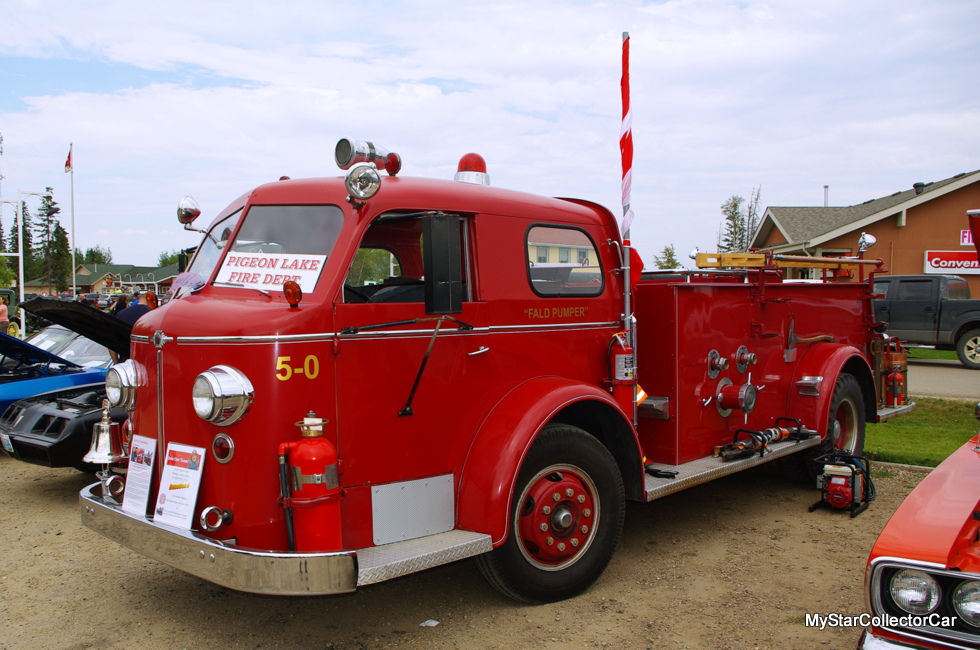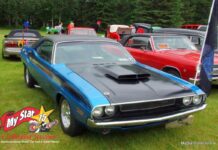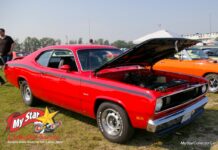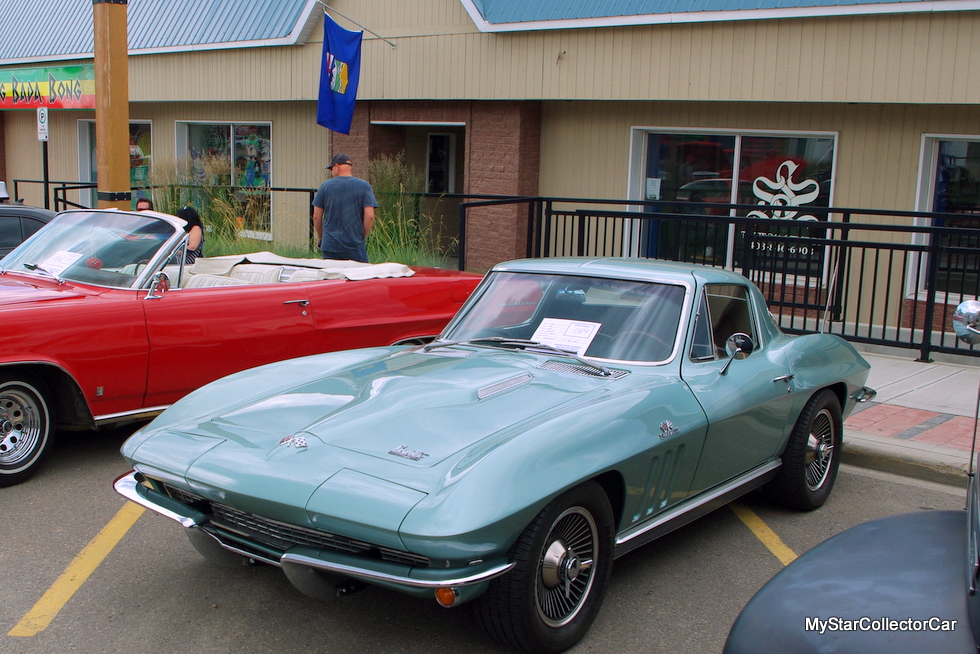There’s an old saying in the car hobby—plan your projects over years, not months.
That’s good advice, but it didn’t apply when a 1964 Dodge 880 was transformed into a 1959 Dodge Custom Royal convertible in four months.
JERRY SUTHERLAND
Scott Steers is the miracle worker behind this incredible transformation, and he’s also the man with the vision to see a ’59 Dodge living inside a full-sized ’64 Dodge. Scott’s not a professional technician, but he’s always had a deep interest in cars as he explained: “I am 68 years old and like a lot of kids who grew up in the early 60s, I built plastic model cars and balsa wood airplanes. I always liked doing things with my hands and I had always loved cars so in my teenage years, I was always working on them–but strictly mechanical work, all of it self-taught”.
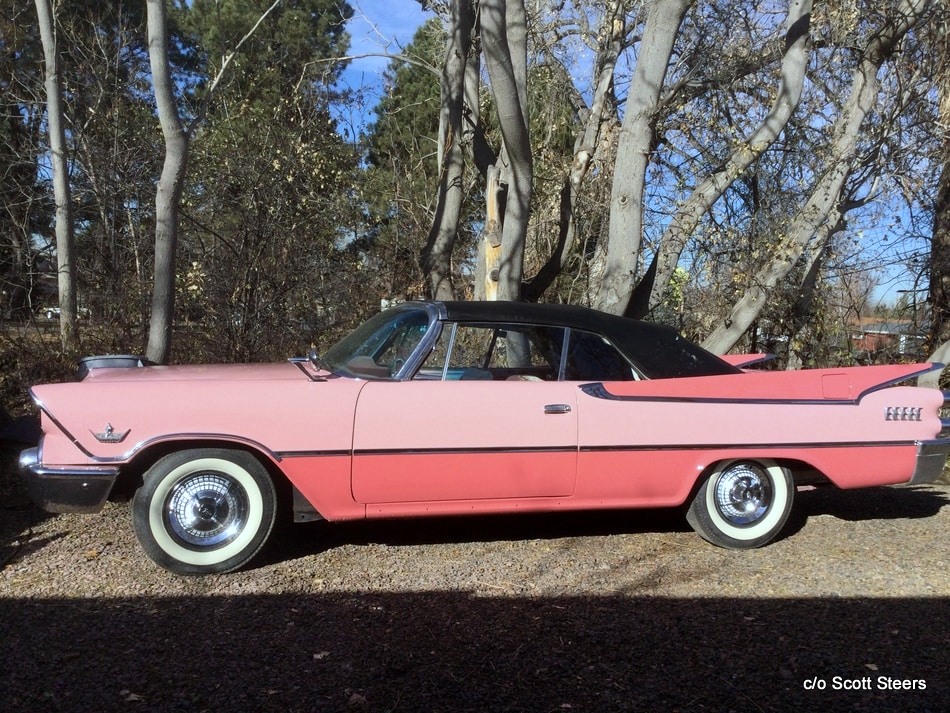
The ’59 Custom Royal made a huge impression on Scott: “I have always had a crush on pink 1959 Dodge convertibles. To this day, I can still remember seeing one for the first time as a 5-year-old child. It was a brand-new pink two-tone. I had been thinking in the back of my mind wondering how I could build myself a ‘59 convertible clone with less work and money while using my much more modest level of skill”.
Scott had an old Alfa Romeo convertible that needed a paint job. He explained: “We hit it off I took it over to a local shop It was just one man with his wife in the front office He agreed to let me work on my car in his shop in exchange for helping him out a little the afternoons. it was from him that I learned the basics of welding and metal work. I had watched him paint about 20 cars when I finally decided to give it a shot on my own. Back then it was probably the only way you could learn the craft. I soon learned that you’re only as good as the number of mistakes you have made, so I stopped being worried about having everything work out perfect the first time. That was a really liberating realization and after that I was willing to try anything for the first time”.
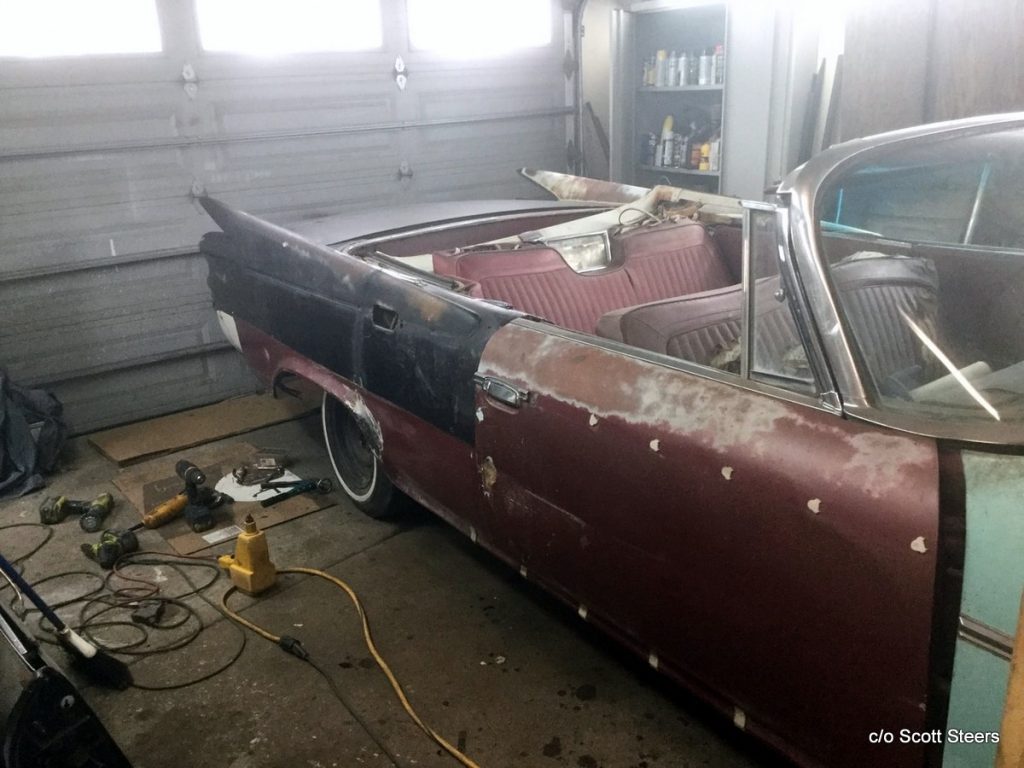
Scott’s moment of inspiration came from sheer luck: “The two cars wound up being parked next to each other by chance where I store some cars and it was only looking at them side by side, I started to realize how similar they were. I started using a tape measure and made paper patterns of various curves and came to realize that they were practically twins. I had seen articles and videos of people putting early Mustang bodies on current generation Mustang GTs and I thought if they can do that—surely I can do this”.
He went all-in on the project—to a point: “I did hedge my bets a little and decided I would use all of my second-best parts on this project. I had some nice two-door hardtop rear quarter panels and a better pair of fenders, but I didn’t want to cut them up for a project that might not work out. I thought it would be fun to try to make a set of quarter panels out of the four-door sedan parts that I had, so that’s what I did. I have always just worked on my own cars as a hobby I’ve never been paid by anyone to do any work”.
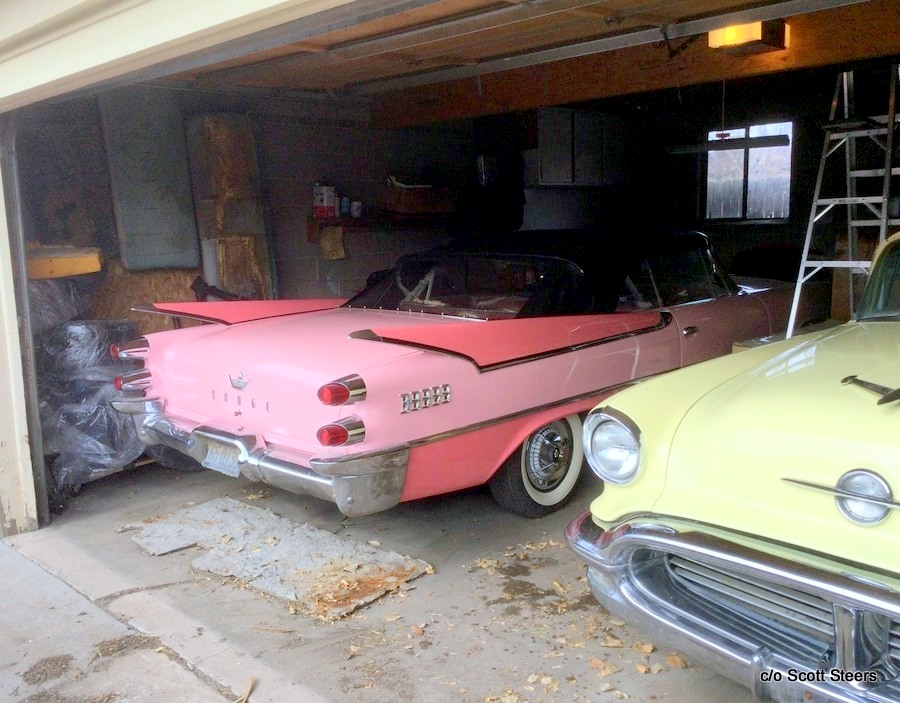
Scott had a large inventory of parts: “A friend of mine had bought a field full of Mopar cars from a farmer in Nebraska. He was only interested in the muscle cars and offered to sell me the three 1959 dodges that were included in the sale for $700 apiece”.
The donor car was well-priced too: “I picked up a 1964 Dodge 880 convertible on eBay for $725. The car had collision damage to the front fender, grille, bumper and right-side door plus a big scrape down the top of the rear quarter panel, it was rough, but it was rust free. It had 65000 miles and had been stored inside for over 35 years. Engine was a 383 with a two-barrel carb and as I had an intake manifold with a known good four-barrel carb I swapped them out. With the usual amount of work and a replacement fuel pump I got it running and it ran well”.
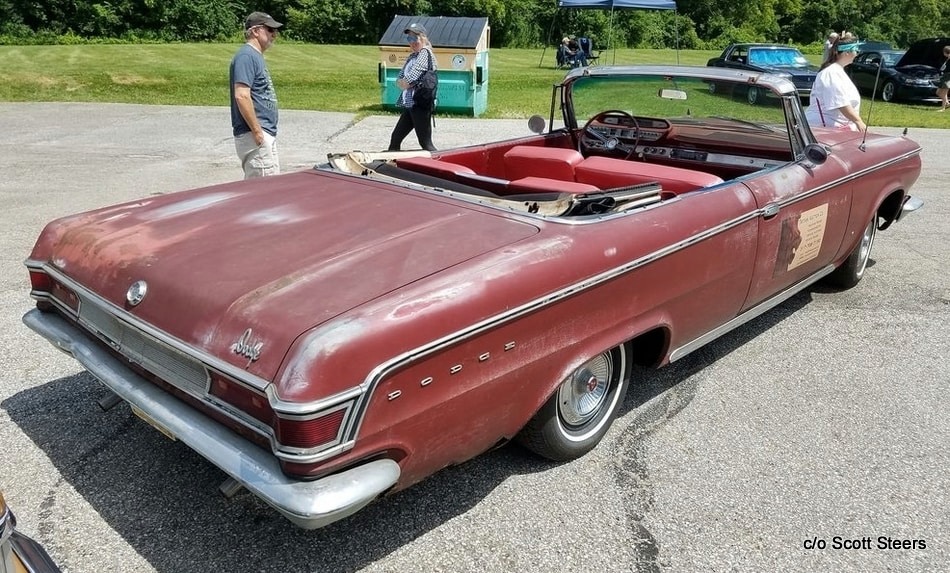
The process was relatively simple: “I started by removing the rear quarters off the 880, cutting 1 inch above the body line. I had picked up a rusty, motor-less 1959 Dodge 4dr sedan for $750. Car was missing most of its floor and trunk, but it did have some nice chrome and rust-free front fenders. I cut the rear quarters off it at the bottom of the mid-body trim line and welded the rear door skins to it to make up some two-door length quarter panels”.
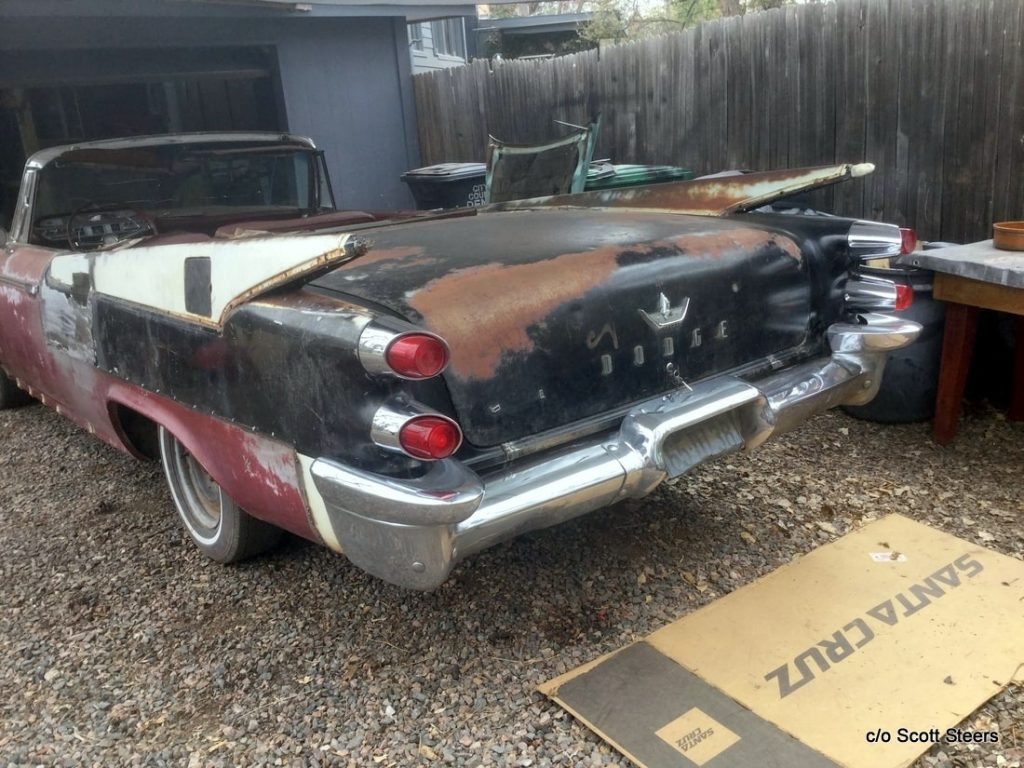
The donor cars were also invaluable: “Taking measurements off of my ‘59 Coupe, I put the quarter panels in the proper position holding them in place with sheet metal screws and when I was happy with the location, I modified the 880 trunk hinges to hold the ‘59 deck lid to where it matched up with the rear quarters”.
Scott explained more of the process: “I butt welded the vertical seams and used panel bond on the horizontal seam with a one-inch overlap held together with sheet metal screws while it cured. This seam would lay under the stainless-steel body molding and would not be visible. I had to modify the rear bumper brackets to put the bumper in the correct position”.
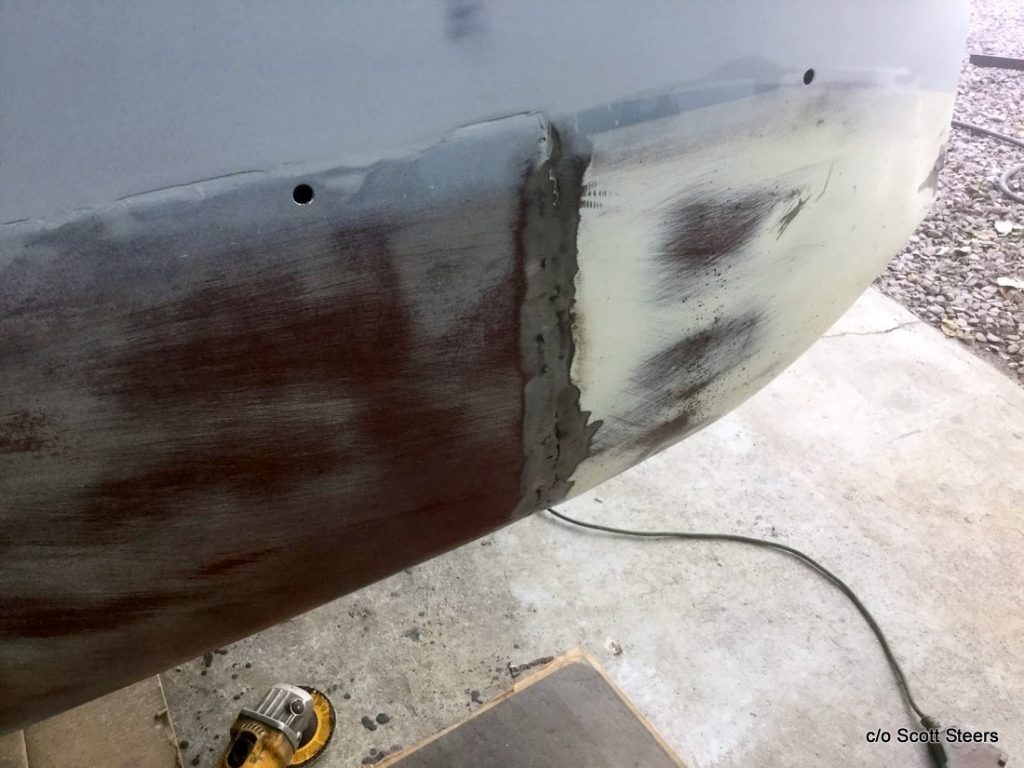
He did go off the program in some ways: “I did not have a nice pair of the chrome inserts that go under the rear of the tailfins and had always thought the car might look better without them, so I cut out all the inner structure under the fin to make them open. Tops of the fenders were flat in this area, so I pounded them out round and welded up the center seam. Made up some brushed aluminum panels that are held in by the moldings to fill in the opening at the rear. Chrome trim pieces will still fit in if I wanted to use them, but I do think I like the car better without them”.
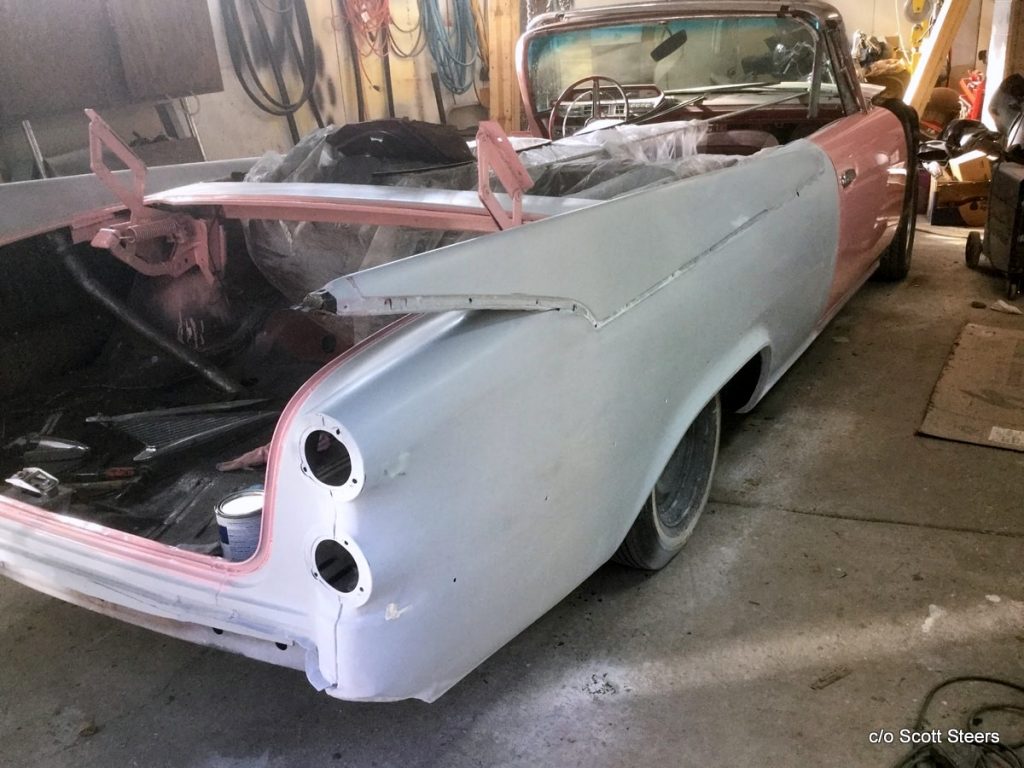
Scott admitted he was lucky on some of the build: “Lower rear quarter panel contours were the same on both cars and matched up nicely where I butt welded them together. The spot weld flange on the bottom matched up to the 1964 trunk extensions perfectly. Inside on the lower edge of the trunk floor everything matched up as well. The panels all fit like they were made for the car. They certainly did not change very much when they went to unibody in 1960!”
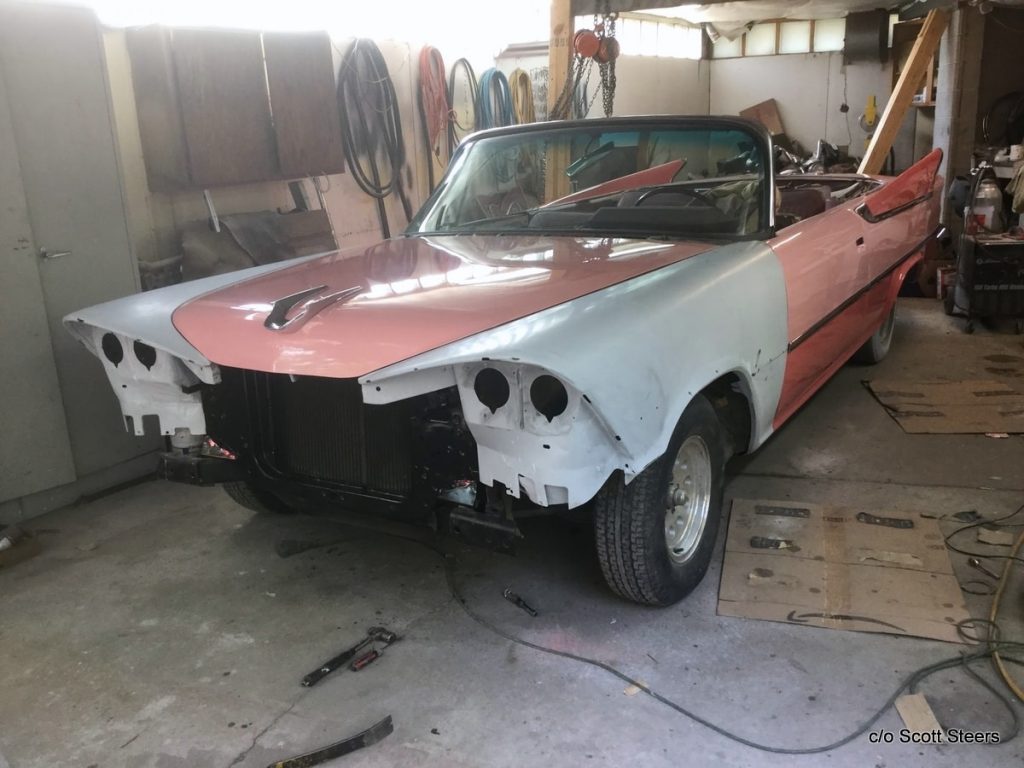
There were many hours of sanding and blocking on the large Dodge, plus Scott had to rework the rear gas filler to the driver’s side. Scott also had to track down the scarce side quarter trim for a two-door hardtop and work on modifications: “There’s a boatload of stainless steel trim on these cars. All of it held on by another boat load of oddly shaped clips plus ‘64 rear wheel arches are flared more than the earlier cars so I had to drill the trim mounting holes a little higher so the trim would sit flat. Doors were longer than the ‘59 doors so I made some longer door trim out of the rear quarter trim moldings off of the 4dr car. Took a fair bit of time to straighten and polish all the trim and then more time to tweak it for a good fit without damaging the new paint”.

The front of the car was equally challenging: “I cut off the bottom of the front fenders where the cut would be hidden under the body trim. 1960 and up cars have more curvature in the bottom half of the doors, so the bottom of the fender would need to be replaced. Radius at the top of the fender needed to be opened up a little to match the radius at the top of the door. I put three cuts in the inner fender support about one inch apart and then I was able to bend the fender a little by hand to match the door radius and then I welded the saw cuts back up”.
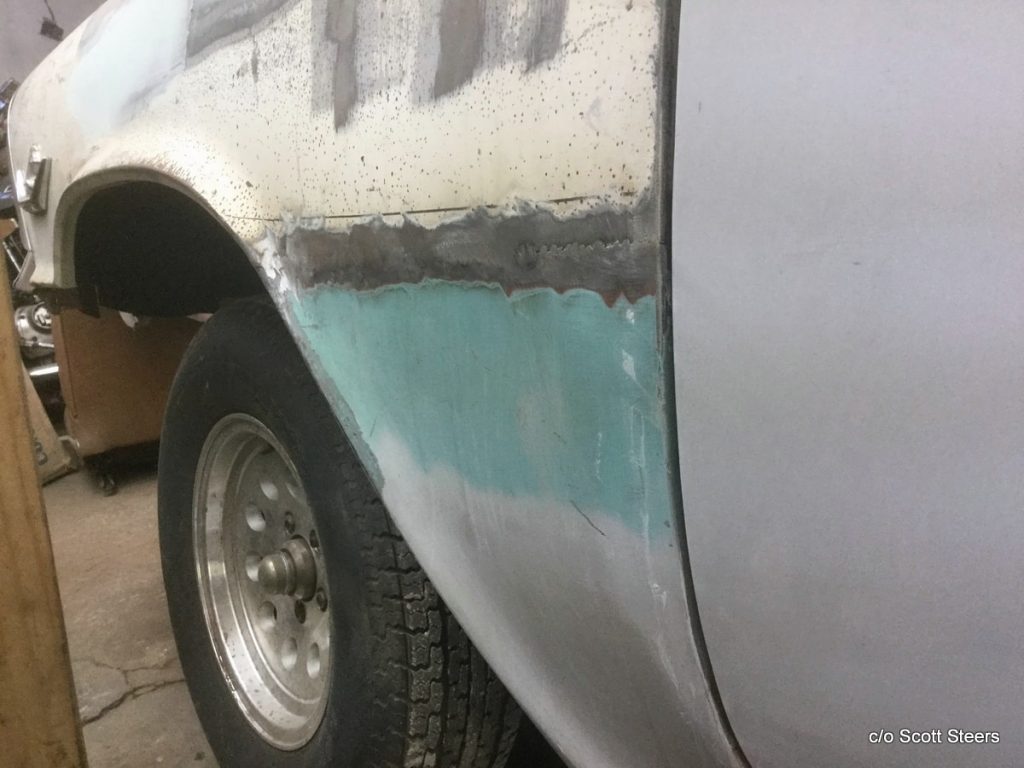
“Modified the ‘59 radiator support to bolt on to the ‘64 subframe and when I had the front fenders where I wanted them, I modified the hinges to hold the hood in the correct position. I must have taken the fenders, hood and hinges off and on about thirty times on each side to get all the tabs, inner fenders, bolt holes and new mounts to all line up and bolt down with good panel lines. This was quite frustrating but a real sense of accomplishment when I finally got it done. Surprisingly, the front bumper bolted up in the correct position without any modifications”.
“With the upper fenders in position I welded the lower part of the 64 fenders into place. I had to do a little hammer and Dolly work on the front edge to get the contours to match up but nothing too bad”.
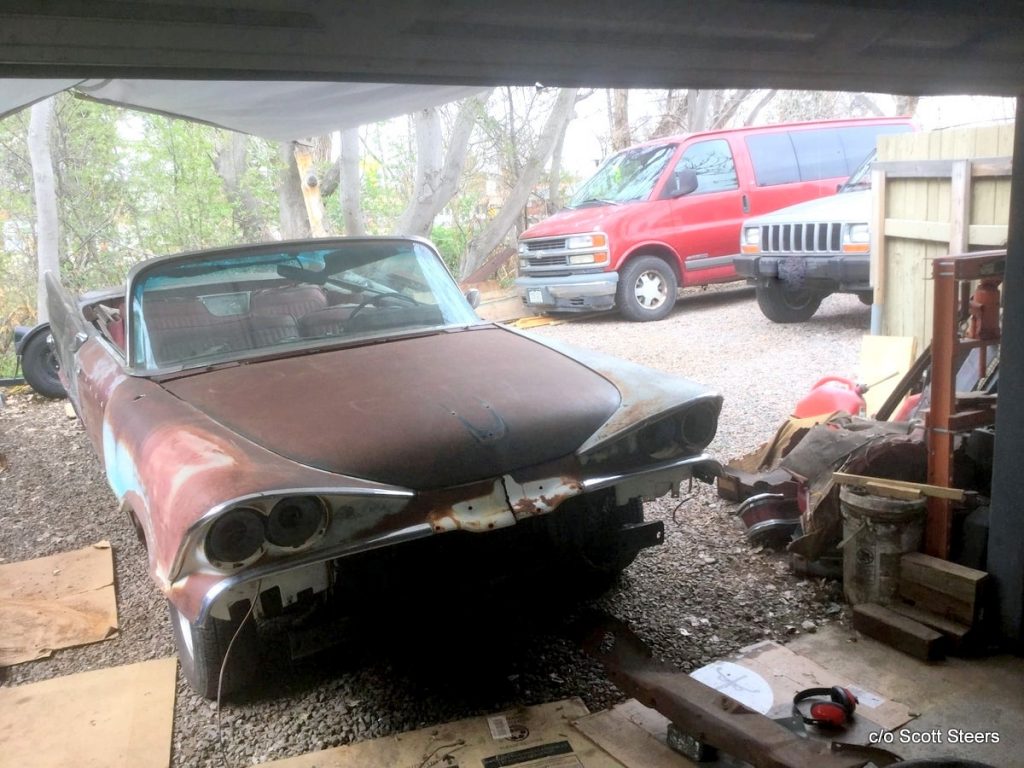
There were other issues: “If you like adjusting panel gaps this is the project for you! I replaced the cowl vent panel with the one from the ‘59. The unibody cowl vents are about 1 inch longer and I did not think I had the skills to shorten the hood”.
Scott enjoyed painting the car: “For some reason it was kind of fun to paint the color pink, I certainly had never done that before! I painted the car one or two pieces at a time out on my gravel driveway. Had a tarp strung out overhead from the garage to the trees and if the wind gods were benevolent things would come out as clean as any paint booth I have ever used. Timing was everything, too early and you had bugs, too late and it got too hot to paint. Starting around 9:00 to 9:30am always seemed to give good results. I would let everything dry until about noon and then move the parts to full sun and let them bake”.
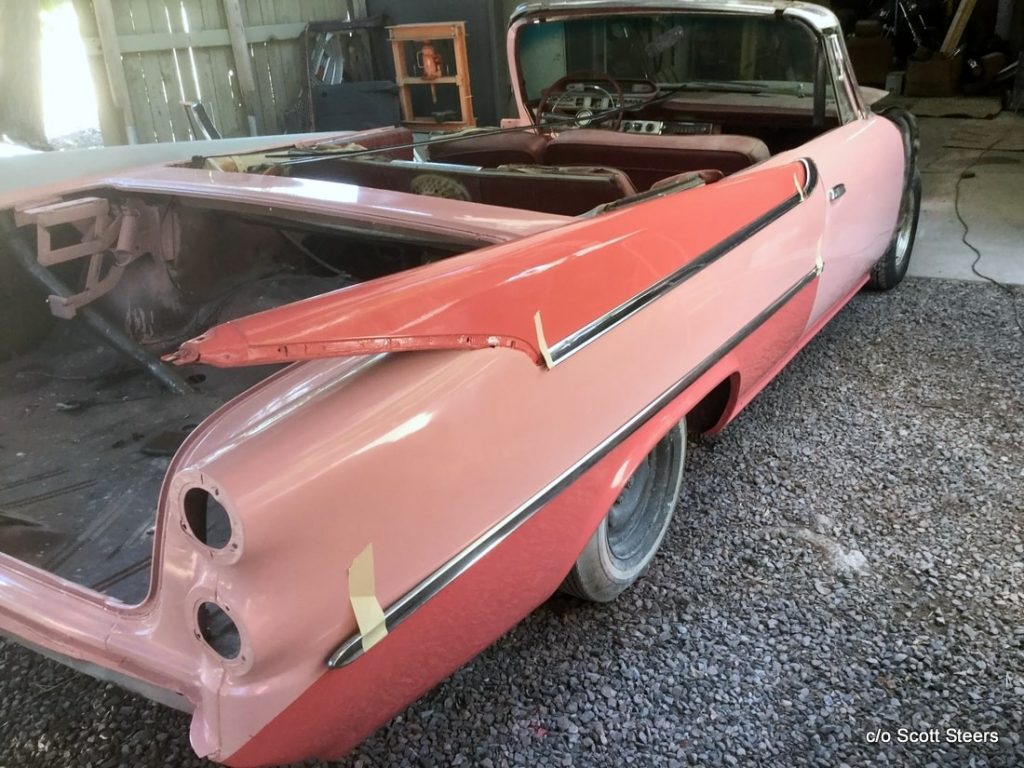
He upgraded the car cosmetically and mechanically by adding disc brakes and 15-inch wheels: “I picked up a set of 15-inch repops. The chromed sheet metal part is a little thin, but the cast pieces were better than the originals. The knights head center cap pops off to reveal a bolt that screws into a bracket held on by the wheel lug nuts so these heavy hubcaps cannot work loose and fall off”.
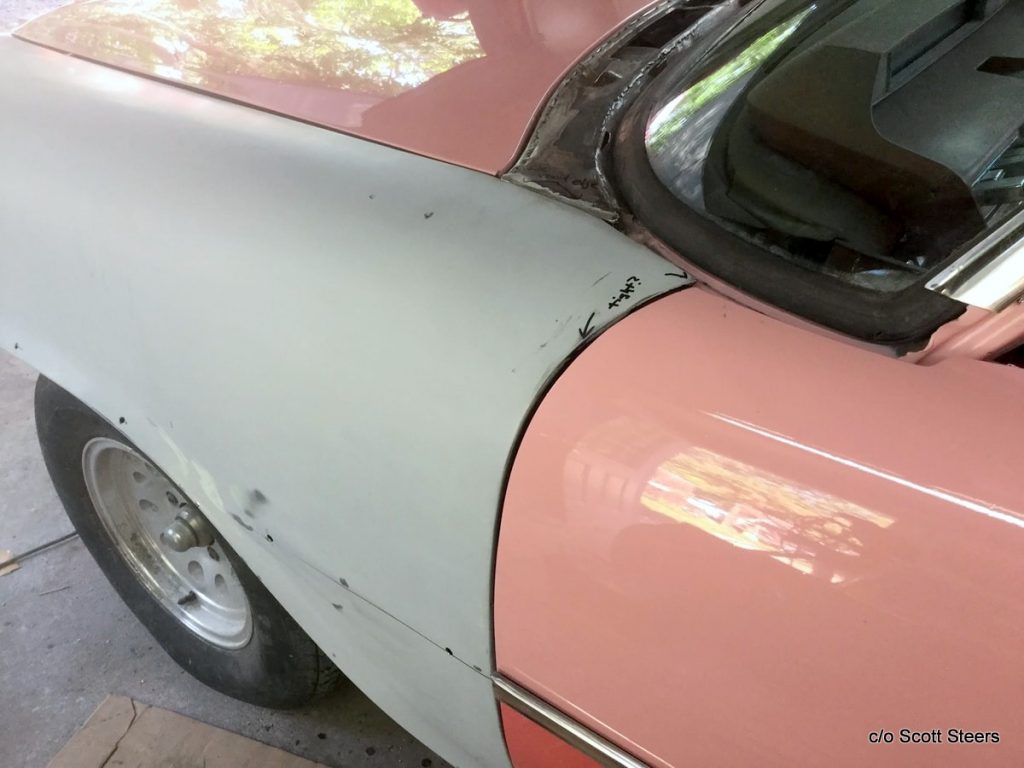
The convertible top was another piece of the puzzle: “I bought the top for $75 figuring I would probably ruin it on my first attempt and I am sure it had been sitting in the box for over 30 years. It had deep creases from storage and wrinkles at first but after a day in the hot sun they all relaxed and I was able to readjust things to get most of the wrinkles out. Only tricky part for a first timer was getting all the staples and the cut seam on the rear bow in a straight and narrow enough line that they are all hidden by the welting that goes on top to cover them up. That welting was thinner than I thought it would be when the job was done”.
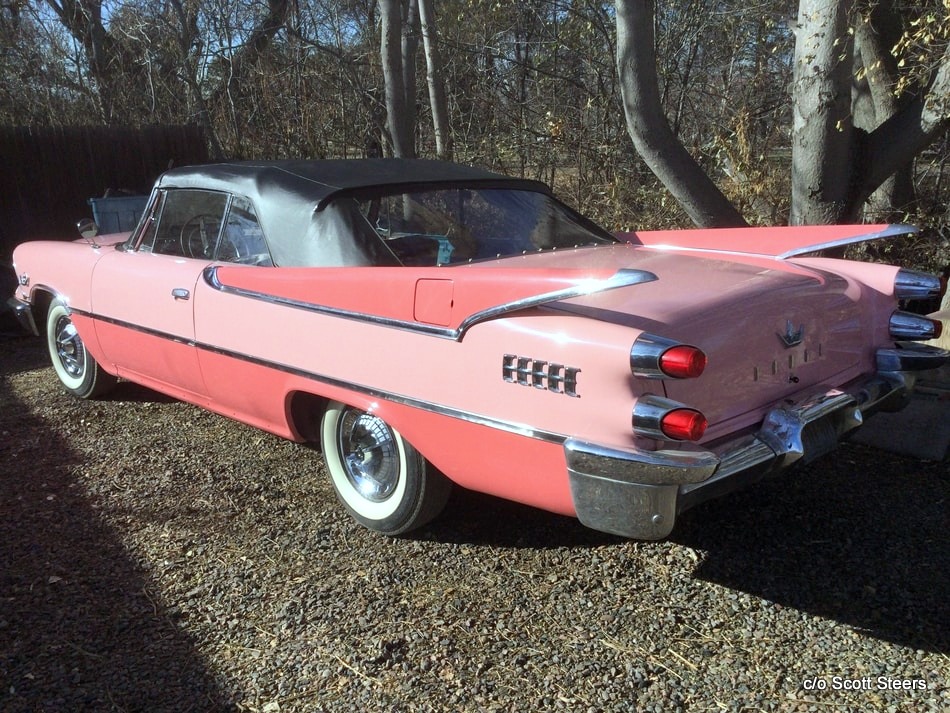
Scott is a detail guy in many ways, so he knew his costs: “I kept track of my time and materials and I have spent around 250 hours and $4600 on the car so far. I am elderly, senile, retired and definitely work at a puttering hobby speed, 3 or 4 hours a day off and on so it was around 4 months to get to this point. You could create a 60 Polara or a 60-61 Newport convertible with a lot less work as I bet the trunk lid and front clip would just be a bolt on job, but that was not what I wanted. The front end was what took up the most of my metal working time, a lot of frustrating trial and error. One of those things that if you did it a second time it would go 80% faster as you would know exactly what needs to be done and where to do it”.
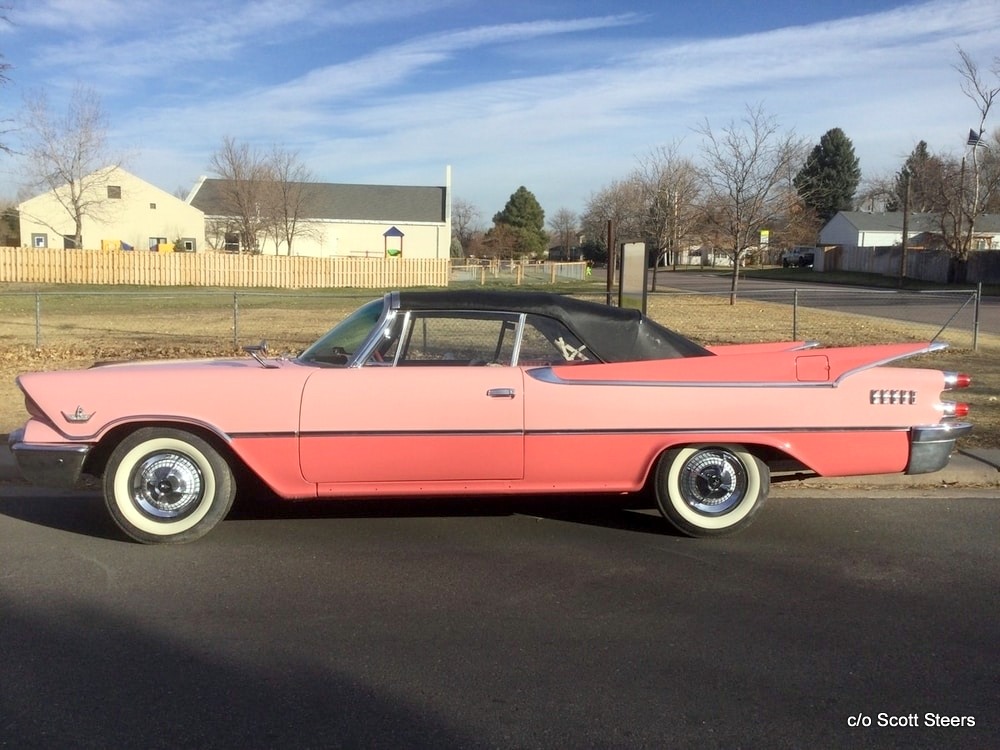
There are still some steps left: “Interior is rough. I have a set of power swivel seats and NOS ‘59 CRL seat covers for the front and rear seats but my two large dogs like riding a round in the car more than my wife does, so I am not in a rush to start the interior. Probably will take me another 100 hours at least to make it nice. I have a nice ‘59 dash that I am sure would fit in without much modification but I kind of like the space age Jetsons look of the early 60s Mopar dashes and may just leave it as you also get that parking lever that pops the car into neutral and locks the rear wheels with a single motion, a big improvement over the earlier set up”.
He likes the driving experience: “The ‘57 and up frame Mopars were pretty good to begin with, probably the best handling of the full framed American cars. I would say that the unibody cars feel a little lighter and you sit a little lower. Definitely a little bit of a more modern feel in the steering, but they are still big American land yachts”.
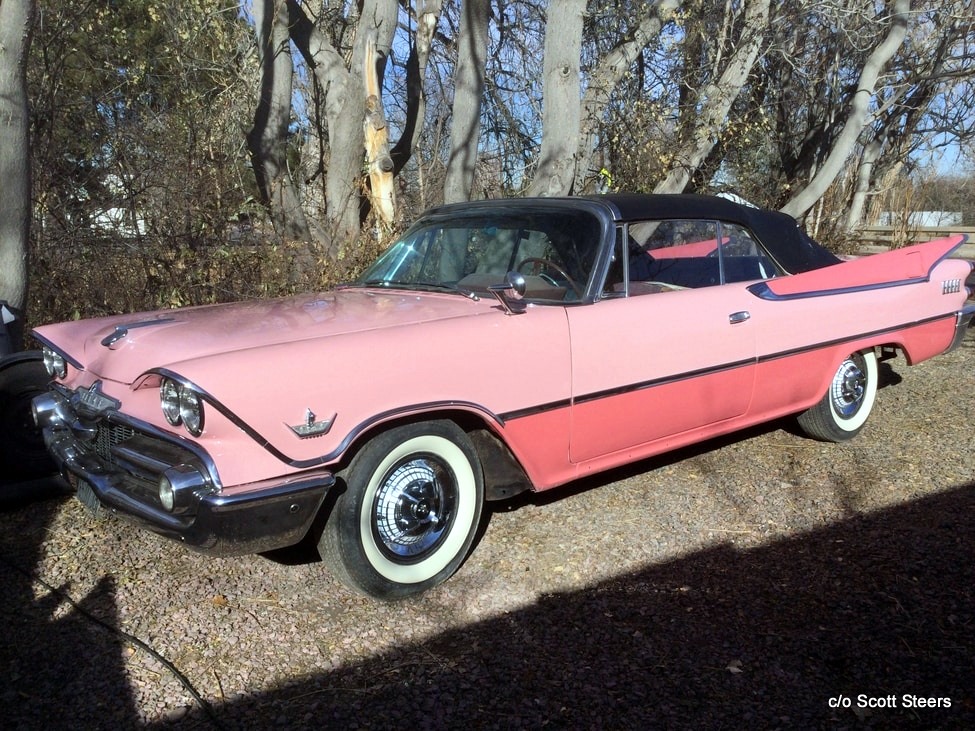
Was it worth it? Scott can answer that question.
Anyway, this was a fun summer project that let me learn some new skills and I now have a one-of-a-kind car that always makes me smile when I see it sitting in the garage, bringing back memories of the one at the drug store so long ago.
Scott Steers
By: Jerry Sutherland
Jerry Sutherland is a veteran automotive writer with a primary focus on the collector car hobby. His work has been published in many outlets and publications, including the National Post, Calgary Herald, Edmonton Journal, Ottawa Citizen, Montreal Gazette, Saskatoon StarPhoenix, Regina Leader-Post, Vancouver Sun and The Truth About Cars. He is also a regular contributor to Auto Roundup Publications.
- CLICK HERE TO SIGN UP FOR THE NEWSLETTER
- CLICK HERE to Like us on Facebook
- CLICK HERE to Follow us on Twitter
- CLICK HERE to Follow us on Pinterest
Please re-post this if you like this article



